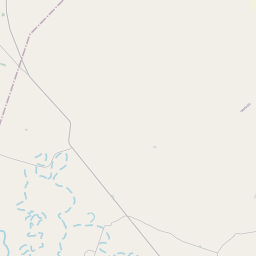Josiah Dawson Hudgins







Josiah Dawson “J.D.” Hudgins, born in 1852, was one of four sons of Joel and Rachel Northington McKenzie Hudgins to survive to adulthood. Hudgins’ ancestors had come from Wales to Virginia in 1742; his father, Joel (d. 1873), came to this area of Texas in 1839 and served as Wharton County Commissioner. In 1850, Joel and Rachel purchased a tract of land from her father, Andrew Northington, an early area settler. There they built the Hudginsville School to educate their sons and other area children. In 1877, J.D. married Mollie Juline McKinney. In the early 1880s,he opened a general mercantile store and saloon in Quinan. The New York, Texas & Mexican Railroad came through the area in 182, missing Quinan by a half mile, so the community moved to be nearer the depot at the new town of Hungerford. J.D. and his brothers formed the J.D. Hudgins & Bros. Partnership, buying land and cattle, as well as a cotton gin and gristmill. J.D. was a charter member of both the Wharton Masonic Lodge and the Methodist Church. J.D. and Mollie built a large family home in Hungerford in 1918 to be nearer his businesses. In 1906, J.D. bought several Brahman cattle, imported into Texas from India because of the breed’s tolerance for conditions of the Texas gulf coast. J.D. and his son, Walter, worked to develop what came to be called the American Brahman breed. They were also early leaders in the American Brahman Breeders Association and helped in Wharton County’s efforts to control Cattle Tick Fever during the early 20th century. After J.D.’s death in 1928, Walter continued his father’s efforts to develop one of the largest registered American Gray Brahman herds in the world. J.D. Hudgins, Inc. perpetuates their legacy. (2004)
As one of the most visible programs of the Texas Historical Commission (THC), historical markers commemorate diverse topics in Texas history, including: the history and architecture of houses, commercial and public buildings, religious congregations, and military sites; events that changed the course of local and state history; and individuals who have made lasting contributions to the state, community organizations, and businesses.
Texas is known for its love of football, and the state has produced many great football players, including legends like Tom Landry, Earl Campbell, and Vince Young.
In 1846, the Texas legislature established Wharton County, named after brothers William Harris Wharton and John Austin Wharton, who were prominent figures in the Texas Revolution. The county was officially organized in 1848, with the town of Wharton selected as the county seat. The growth of the county was fueled by the development of the railroads, which provided transportation for agricultural products such as cotton, corn, and cattle.
During the Civil War, Wharton County was heavily affected by the conflict. Many of the county's residents supported the Confederacy, with several military units being raised in the area. However, the county also had a significant number of Union sympathizers, leading to tensions and conflicts within the community. After the war, the county gradually recovered and experienced economic growth, with new industries such as oil and gas exploration contributing to its prosperity.
Today, Wharton County is a diverse community with a strong agricultural base. The county is known for its rice and cattle production, as well as its oil and gas industries. It is also home to several historical sites, including the Wharton County Courthouse, which was built in 1889 and is listed on the National Register of Historic Places. With its rich history and thriving economy, Wharton County continues to be an important part of Texas's cultural and economic landscape.
Wharton County Timeline
This timeline provides a condensed summary of the historical journey of Wharton County, Texas.
- 1846: Wharton County is established by the Texas legislature
- 1848: The first settlements are established in the county
- 1849: The town of Wharton is founded and becomes the county seat
- 1850: The population of the county is 1,075
- 1861-1865: Wharton County residents participate in the American Civil War
- 1881: The Gulf, Colorado and Santa Fe Railway reaches Wharton County
- 1900: The Galveston hurricane devastates the county, causing widespread destruction
- 1930: The county's population reaches its peak at 39,195
- 1965: The construction of the Wharton County Junior College is completed
- 1985: The county courthouse is added to the National Register of Historic Places